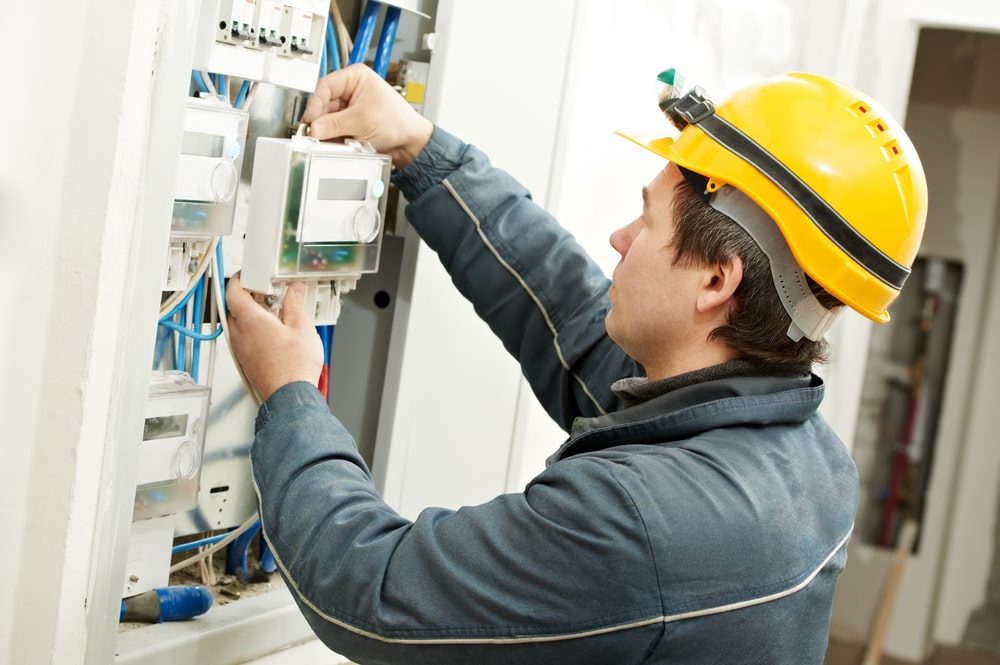Home > Energy Plans > How To Connect Electricity
How To Connect Electricity
Are you wondering how to connect electricity to your new home? Find out the process for getting the power switched on right here with Savvy
Author
Savvy Editorial TeamFact checked

Looking to connect power to your home? Understanding how to connect electricity is essential for ensuring a smooth and hassle-free moving process. From selecting an electricity provider, to comparing plans and then completing the necessary paperwork, this guide provides step-by-step instructions to help you get the job done. Explore the process of connecting electricity and let Savvy get you started on the right track to powering up your new home.
How do I get electricity connected to my new home?
Here is a step-by-step guide to help you get electricity connected to your new home:
- Research electricity providers through Savvy: Start by researching different electricity plans available in your area. You can do this quickly and easily by comparing plans through Savvy. Look at different tariff rates, connection fees, supply charges, and any additional discounts offered. Choose an energy plan that best suits your needs.
- Select your chosen electricity provider: Contact the electricity provider you have selected through Savvy. Let them know your new address, your move-in date, and your contact details.
- Set up billing and payment options: Discuss billing and payment methods with your provider. Choose a payment option that suits you, such as setting up a direct debit with your bank, or making online payments through the retailer’s website.
- Provide the necessary ID documentation: Provide the required identification and proof of address documents. Your electricity retailer will let you know what documents they need.
- Arrange a connection date and property access: Coordinate with your retailer to determine the exact connection date. Make sure the connection technician will be able to access the meter box at your new home.
- Schedule a meter reading: Arrange for a meter reading at the address where your new connection will take place. This will often be done by the same technician who connects the power in your name.
- Get connected: On the agreed connection date, your provider will complete the necessary steps to connect the electricity, ensuring you can move in and use the power as soon as you arrive at your new home.
By following this simple step-by-step guide, you can easily get electricity connected to your new home in time for your move in.
Can I take my existing electricity plan with me?
Yes, you can generally take your existing electricity plan with you when you move to a new home. However, this will depend on whether your current electricity provider operates in the area of your new home. Naturally, this will depend on how far you’re moving, whether you’re moving house to a different state, and whether your new location is on the same electricity network grid as your previous home. Here’s how to find out:
- Contact your current electricity provider: Notify your current electricity provider about your upcoming move, and provide them with your new address.
- Check provider availability: Ask your electricity provider if they offer service in your new location. Some electricity retailers don’t operate in all areas.
- Explore your options: If your current provider doesn't serve your new area, use Savvy’s free comparison service to find a new retailer that does provide service in your new area.
- Compare plans: Take the opportunity to compare electricity plans from different providers until you find one that fits your needs. Look out for any special offers or cashback incentives for new customers.
- Notify your provider about your move: If you are able to transfer your existing plan, make sure to inform your provider about your move well in advance. This allows them to schedule the disconnection at your current address, and the re-connection at your new home.
- Update your account details: Update your account information with your new address, contact details, and any other required information to ensure a smooth transition.
By contacting your current electricity provider and checking power availability in your new area, you can quickly find out if you can take your existing electricity plan with you. If not, compare plans from different providers to find the best option for your new home.
How do I compare new electricity plans?
Choosing a new electricity provider involves comparing different plans in detail to see which one offers the best deal for your power needs. When comparing electricity plans, it's essential to consider various factors to find the best energy plan for your household. These are the comparison points you should keep in mind when comparing plans:
Types of plans:
- Standard Contract: This type of plan offers the electricity price set by law in your state, without any additional features. It provides a basic and straightforward option without exit fees, allowing you to switch providers freely.
- Market Contract: These plans come with special conditions and often include price discounts for the duration of the contract. However, keep in mind that there may be exit fees if you decide to switch providers during the contract term.
Variable vs. fixed rates for market contracts:
- Variable electricity rate plans: These rates fluctuate based on national wholesale electricity market price changes, leading to potential spikes or drops in price. These are the most common plans available in Australia.
- Fixed rate plans: These plans offer electricity at a fixed rate for a set period of time, often one to two years, offering greater predictability and stability for your energy costs. The disadvantage with them is that there may be an exit fee payable if you choose to switch electricity providers during your contract period.
Cost of the plan compared to national reference price:
Compare the percentage difference between the retailer's price and the national reference price. This allows you to compare costs accurately and determine the savings potential.
Tariffs:
The electricity tariff is the rate at which you’re charged for the electricity you use. These are the different types of tariffs that are available on different electricity plans:
- Single rate tariff: The cost per kilowatt-hour (kWh) you’re charged remains the same regardless of the time of use.
- Time of use tariff: Different rates apply during peak, off-peak, and shoulder periods, reflecting varying electricity demand throughout the day.
- Controlled load tariff: This tariff is specific to high-demand appliances and is billed separately from standard electricity usage, using a second dedicated electricity meter
- Demand tariff: The tariff is based on the highest amount of electricity used during a specific period, regardless of the time of day.
Feed-in tariffs:
If you have solar panels, consider the feed-in tariff, which allows you to sell excess electricity generated back to the power grid. The feed-in tariff is expressed in cents per kilowatt hour, c/kWh, and varies around the country from as low as 2c/kWh to over 25c/kWh. Research the rate offered by your provider, and any additional incentives or rebates available on a solar contract.
Discount offers:
Pay attention to the terms and conditions of discount offers, as they may have limitations or eligibility criteria. Some discounts may apply only for a limited time or certain portions of your bill.
Fees:
Compare connection and disconnection fees, credit card and direct debit fees, late payment fees, early exit fees, and paper bill fees. Comparing fees will help identify providers with the lowest associated costs.
Green offers:
If reducing your carbon footprint is important to you, look at any GreenPower or carbon neutral plans the retailer may be able to provide. Such plans encourage the use of renewable energy and are one way that you can play a part in reducing greenhouse gas emissions in Australia.
By considering these factors, you can make an informed decision when comparing electricity plans and choose the one that best suits your needs and preferences.
Helpful energy guides
Compare energy plans
Disclaimer:
Savvy is partnered with Econnex Comparison (CIMET Sales Pty Ltd, ABN 72 620 395 726) to provide readers with a variety of energy plans to compare. We do not compare all retailers in the market, or all plans offered by all retailers. Savvy earns a commission from Econnex each time a customer buys an energy plan via our website. We don’t arrange for products to be purchased directly, as all purchases are conducted via Econnex.
Any advice presented above is general in nature and doesn’t consider your personal or business objectives, needs or finances. It’s always important to consider whether advice is suitable for you before purchasing an energy plan. For further information on the variety of energy plans compared by Econnex, or how their business works, you can visit their website.










